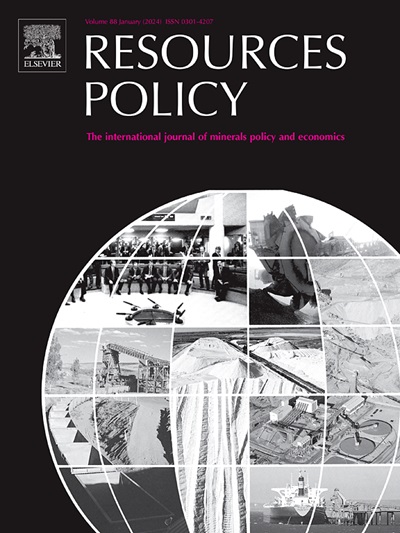Evaluating public-private partnerships in mining: An evolutionary game theory approach to strategic dynamics and regulatory impacts
IF 10.2
2区 经济学
0 ENVIRONMENTAL STUDIES
引用次数: 0
Abstract
Public-private partnerships (PPPs) in the mining industry face challenges such as conflicts of interest, lack of transparency, and uncertain stakeholder cooperation, which reduce the effectiveness of these collaborations. This study employs evolutionary game theory to examine the strategic dynamics between the government (as a supervisor) and contractors (as executors) in mining PPPs. The proposed model utilizes replicator dynamics and numerical simulations to analyze the impact of regulatory mechanisms, including incentives, penalties, government oversight effectiveness, and contractor cooperation incentives. Data from the Angoran lead-zinc mine are used to validate the model. The results indicate that increasing penalties and incentives within the range of 3 %–12 % of total investment accelerates contractors’ transition toward cooperation, leading to a stable equilibrium with the strategy of “government negotiation and contractor cooperation.' Furthermore, strengthening supervision and cooperation incentives by 5–15 % accelerates the stabilization of equilibrium, and cooperation is in an optimal state at 10 %, where the interests of both parties are effectively aligned. This study introduces a novel framework for modeling stakeholder behavior in mining PPPs and provides insights into achieving equilibria in the game between players, where strategic interactions stabilize through balanced regulatory influence, offering policy recommendations for effective regulatory design.
评估矿业中的公私伙伴关系:战略动态和监管影响的进化博弈论方法
采矿业的公私伙伴关系(ppp)面临着利益冲突、缺乏透明度和利益相关者合作不确定等挑战,这些挑战降低了这些合作的有效性。本研究运用演化博弈论,考察矿业公私合作项目中政府(作为监管方)与承包商(作为执行方)之间的战略动态。该模型利用复制因子动力学和数值模拟来分析监管机制的影响,包括激励、惩罚、政府监督有效性和承包商合作激励。利用安哥拉铅锌矿的数据对模型进行了验证。结果表明,在总投资的3% ~ 12%范围内增加惩罚和激励,可加速承包商向合作的过渡,最终达到“政府谈判-承包商合作”的稳定均衡。此外,将监管和合作激励力度提高5 - 15%,可以加速平衡的稳定,在10%时合作处于最优状态,此时双方的利益有效一致。本研究引入了一种新颖的框架来模拟采矿ppp中的利益相关者行为,并提供了在参与者之间的博弈中实现平衡的见解,其中战略互动通过平衡的监管影响稳定,为有效的监管设计提供了政策建议。
本文章由计算机程序翻译,如有差异,请以英文原文为准。
求助全文
约1分钟内获得全文
求助全文
来源期刊

Resources Policy
ENVIRONMENTAL STUDIES-
CiteScore
13.40
自引率
23.50%
发文量
602
审稿时长
69 days
期刊介绍:
Resources Policy is an international journal focused on the economics and policy aspects of mineral and fossil fuel extraction, production, and utilization. It targets individuals in academia, government, and industry. The journal seeks original research submissions analyzing public policy, economics, social science, geography, and finance in the fields of mining, non-fuel minerals, energy minerals, fossil fuels, and metals. Mineral economics topics covered include mineral market analysis, price analysis, project evaluation, mining and sustainable development, mineral resource rents, resource curse, mineral wealth and corruption, mineral taxation and regulation, strategic minerals and their supply, and the impact of mineral development on local communities and indigenous populations. The journal specifically excludes papers with agriculture, forestry, or fisheries as their primary focus.
 求助内容:
求助内容: 应助结果提醒方式:
应助结果提醒方式:


